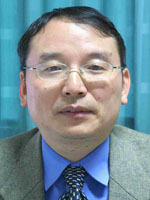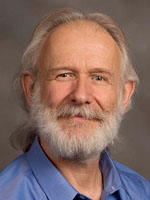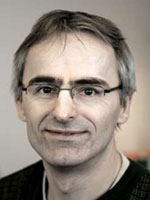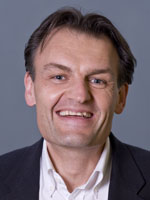
Downloads
Please ask from a committee member to obtain the passkey to download the files.
- Tutorial 1 Power Electronics – The Key Technology for Renewable Energy System Integration. Prof. Frede Blaabjerg (Aalborg University, Denmark)
- Tutorial 2 Is SiC a Game Changer? Prof. Dushan Boroyevich (Virginia Tech, USA)
- Tutorial 3 Principles and Practices of Digital Current Regulation for AC Systems. Prof. Grahame Holms (RMIT University, Melbourne, Australia)
- Tutorial 4 Electric Springs: Basic Principles, Circuit Topologies and Applications to Smart Grids. Prof. Ron Hui (The University of Hong Kong, Hong Kong) & Dr. Chi Kwan Lee (The University of Hong Kong, Hong Kong)
- Tutorial 5 SiC MOSFET Three-Phase Inverters with Soft Switching Technology. Prof. Dehong Xu (Zhejiang University, Hangzhou, China)
- Tutorial 6 Fundamentals and Application-Oriented Evaluation of Solid-State Transformer Concepts. Prof. Johann Kolar (ETH Zurich, Switzerland) & Jonas E. Huber (ETH Zurich, Switzerland)
- Plenary: High-Power Converters and its Applications: Today and Tomorrow Prof Hirofumi Akagi
- Plenary: Multi-Objective Optimization in Power Electronics Prof Johann Kolar
- Plenary: Design for Reliability in Power Electronic System Prof. Frede Blaabjerg (Aalborg University, Denmark)
Tutorials / Keynote Speakers

Prof. John Boys
John Talbot Boys was born in Invercargill in 1940 and completed a BE in EEE in 1962, and a PhD in Physics in 1968 before going overseas for 5 years, in England with Redac Software Ltd and in The Republic of Ireland with a US Multinational, SPS Technologies. He returned to New Zealand in 1974 to a lectureship at the University of Canterbury transferring to the University of Auckland in 1977, where he is currently a Distinguished Professor Emeritus in the Department of Electrical and Computer Engineering.
Professor Boys’ research interests are Power Electronics, AC Motor Control, and Inductive power Transfer and in all of these he has published widely had Patents granted, and had successful collaborations with National and International Industries. He has won a significant number of prizes culminating in The Prime Minister’s Prize (with Grant Covic) for work with IPT. Professor Boys’ Professional interests are with The Institution of Professional Engineers (IPENZ) where he is a Distinguished Fellow, and more academically he is a Fellow of the Royal Society of New Zealand (FRSNZ).
In other interests Professor Boys is a keen golfer and a regular Church attender, and takes a real interest in the effect of technology on our standard of living and happiness.

Prof. Dehong XU

Prof. Dushan Boroyevich
Is SiC a Game Changer?
Over the last two decades there has been much exhilaration about the anticipated transformation of power electronics that SiC devices would bring, which has been accompanied by tremendous efforts of governments and companies to meet those expectations. The successful commercial use of SiC Schottky diodes over the last ten years has helped improve efficiency and reduce size of power converters in several applications, but only in the last couple of years several SiC active switching devices became commercially available at reasonable cost and volumes. CPES has been involved all-along in characterizing the newest SiC devices and evaluating their potential to change existing applications and open completely new ones.
The presentation will review the state-of-the-art and summarize CPES experiences in evaluating the use of SiC devices in dc-dc, ac-dc (single- and three-phase) and dc-ac power converters, as well as in three-phase motor drives, for transportation and higher power applications, ranging from kilowatts to megawatts. It will be shown that SiC devices can provide tangible improvements to existing applications so that their adoption will be mostly determined by the converter cost tradeoff. On the other hand, SiC opens two previously unachievable sorts of applications: power converters where power semiconductor devices operate at high-temperatures (> 200 ºC), and high-power conversion in the megawatt range with switching frequencies in tens of kilohertz. In these new applications, the SiC adoption is mostly governed by the system cost tradeoffs and will be fundamentally limited by the availability of other materials, passive devices, sensors, packaging, and system integration technologies that can operate at high-temperature, high-power and high-frequency.

Prof. Frede Blaabjerg
Power Electronics – The Key Technology for Renewable Energy System Integration
The energy paradigms in many countries (e.g. Germany and Denmark) have experienced a significant change from fossil-based resources to clean renewables (e.g. wind turbines and photovoltaics) in the past few decades. The scenario of highly penetrated renewables is going to be further enhanced – Denmark expects to be 100 % fossil-free by 2050. Consequently, it is required that the production, distribution and use of the energy should be as technologically efficient as possible and incentives to save energy at the end-user should also be strengthened. In order to realize the transition smoothly and effectively, energy conversion systems, currently based on power electronics technology, will again play an essential role in this energy paradigm shift. Using highly efficient power electronics in power generation, power transmission/distribution and end-user application, together with advanced control solutions makes the way for renewable energies. In light of this, some of the most emerging renewable energies, e.g. wind energy and photovoltaic, which by means of power electronics are changing character as a major part in the electricity generation, are explored in this presentation. Issues like technology development, implementation, power converter technologies, control of the systems, and synchronization are addressed. Special focuses are paid on the future trends in power electronics for those systems like how to lower the cost of energy and to develop emerging power devices and better reliability tool.
Frede Blaabjerg (S’86–M’88–SM’97–F’03) was with ABB-Scandia, Randers, Denmark, from 1987 to 1988. From 1988 to 1992, he was a Ph.D. Student with Aalborg University, Aalborg, Denmark. He became an Assistant Professor in 1992, an Associate Professor in 1996, and a Full Professor of power electronics and drives in 1998. His current research interests include power electronics and its applications such as in wind turbines, PV systems, reliability, harmonics and adjustable speed drives.
He has received 15 IEEE Prize Paper Awards, the IEEE PELS Distinguished Service Award in 2009, the EPE-PEMC Council Award in 2010, the IEEE William E. Newell Power Electronics Award 2014 and the Villum Kann Rasmussen Research Award 2014. He was an Editor-in-Chief of the IEEE TRANSACTIONS ON POWER ELECTRONICS from 2006 to 2012. He has been Distinguished Lecturer for the IEEE Power Electronics Society from 2005 to 2007 and for the IEEE Industry Applications Society from 2010 to 2011. He is nominated in 2014 by Thomson Reuters to be between the most 250 cited researchers in Engineering in the world.

Prof. Grahame Holmes

Prof. Johann Kolar
Fundamentals and Application-Oriented Evaluation of Solid-State Transformer Concepts
Johann W. Kolar is a Fellow of the IEEE and is currently a Full Professor and the Head of the Power Electronic Systems Laboratory at the Swiss Federal Institute of Technology (ETH) Zurich. He has proposed numerous novel PWM converter topologies, and modulation and control concepts and has supervised over 60 Ph.D. students. He has published over 650 scientific papers in international journals and conference proceedings, 3 book chapters, and has filed more than 120 patents. He has presented over 15 educational seminars at leading international conferences and has received 21 IEEE Transactions and Conference Prize Paper Awards, the 2014 IEEE Middlebrook Award, and the ETH Zurich Golden Owl Award for excellence in teaching. The focus of his current research is on ultra-compact and ultra-efficient SiC and GaN converter systems, wireless power transfer, Solid-State Transformers, Power Supplies on Chip, and ultra-high speed and bearingless motors.
© Copyright 2016, IEEE SPEC 2016.